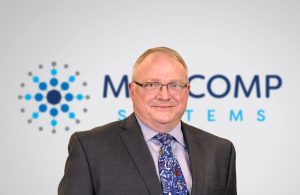This article originally appeared in Gibson’s Healthcare Musings.
Jay Anders, MD is CMIO of Medicomp Systems.

At a recent health IT user conference, the organization’s leaders laid out their vision for a single shared network of health care data that would span a global network of health care systems. I am sure that the crowd was very supportive of the initiative which aims to create a network that resolves existing interoperability issues and allows providers to work together across their organizations to achieve the best possible results for patients.
If I had been at the conference, I’m sure that I would have jumped to my feet and cheered at the news that someone was finally going to fix interoperability! After all, what health IT geek doesn’t get all excited at the thought of patient data freely flowing from health system to health system?
I’m actually disappointed that I couldn’t attend this particular meeting and missed hearing more details about all the big interoperability advancements that are on tap. I instead stayed home and pondered why the two big health systems in my town are unable to share my medical records, despite using EHRs developed by the same vendor. Should I blame the health systems for refusing to share data in an attempt to protect their turfs and maintain competitive advantages in the community? Or should I be shaking my finger at all the EHR vendors who readily pay lip service to interoperability but actually have little regard for what providers truly need?
Regardless of who’s at fault, we must address healthcare’s lack of interoperability if we want to create a global or even nationwide network of shared clinical data. We have heard the rhetoric and understand the vision. Now it’s time for action – which is why I’ve compiled this short list of the top priorities to make true interoperability happen.
Start simple. Instead of trying to exchange every piece of data in every patient record, let’s start simple and first share problem lists, medications and lab results. These categories are all easily codified using well-established vocabularies, such as SNOMED, Rx-NORM and LOINC. Unfortunately, some EHRs use their own proprietary linkages rather than standard vocabularies, meaning they’ll need to do additional work to create clean crosswalks.
Pick a communication standard. We have a variety of standard formats for communicating data, including FHIR, HL7, and CCD. Let’s simplify things and identify a single standard and require everyone to use it. Whatever method is selected, it must allow the sender to share data in a format that can be easily integrated into the receiver’s system. PDFs or other forms of “electronic paper,” by the way, are not the answer because these formats require incoming data to be further manipulated to make the details easily accessible at the point of care and in support of actionable decision-making.
Address patient authentication. One of the biggest roadblocks to interoperability is absence of a universal patient identifier. We need to clarify the specific mechanics for identifying patients and reconciling records to ensure that incoming data is attached to the right patient without compromising patient privacy. Without some sort of patient identification standard, the seamless exchange clinical data will remain a struggle.
Create incentive programs. As I reflect on the widespread advancements in health IT over the last couple of decades, I am often surprised by our lack of progress in achieving ubiquitous interoperability. Also surprising is the lack of coordination between the federal government and private payers to develop interoperability initiatives that require providers and vendors to implement interoperability tools and use them on an ongoing basis. When providers have access to more complete patient records, they can minimize duplicate testing and therapies, increase care coordination, and improve overall patient safety, while ultimately reducing healthcare costs. Given the potential for significant savings, why wouldn’t the government and private payers want to create a Meaningful Use-like incentive program that rewards providers for adhering to interoperability standards and penalizes those who fail to cooperate? The Meaningful Use program wasn’t perfect, but it was very effective in terms of driving the widespread adoption of EHRs.
If and when we achieve true interoperability across health systems and between all providers, I will be the first to stand up and cheer! Until then, we need to move past the endless hype and deliberately take steps to eliminate interoperability barriers and create programs that identify specific standards and financially reward providers for the continuous exchange of actionable clinical data for enhanced patient care.
About the Author
Jay Anders, MD is Chief Medical Officer of Medicomp Systems. Dr. Anders supports product development, serving as a representative and voice for the physician and healthcare community that Medicomp’s products serve. Prior to joining Medicomp, Dr. Anders served as Chief Medical Officer for McKesson Business Performance Services, where he was responsible for supporting development of clinical information systems for the organization. He was also instrumental in leading the first integration of Medicomp’s Quippe Clinical Documentation into an EHR. Dr. Anders spearheads Medicomp’s clinical advisory board, working closely with doctors and nurses to ensure that all Medicomp products are developed based on user needs and preferences to enhance usability.
